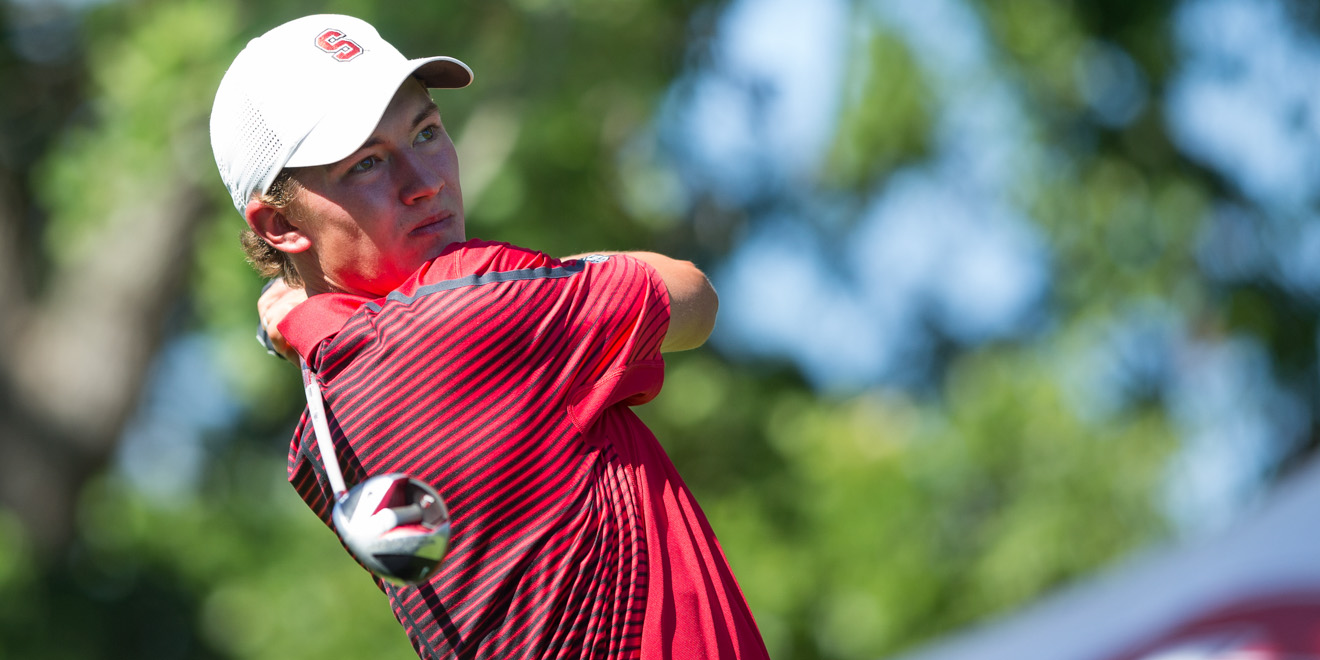Playoff success, like a good golf swing, is all about timing. Over the course of a long season, there are plenty of teams with the talent to win a championship. Often, the team that does win is the team that peaks at the right time.
The eighth-ranked Stanford men’s golf team, a consistently strong group all year, is starting to reach its peak at the perfect time of the season. Coming off a stellar Pac-12 Championships, the Cardinal head to Chapel Hill, North Carolina for the NCAA Regionals from May 14-16.

After the first three days of the conference tournament, Stanford was nine strokes behind leader Arizona State. This deficit, coupled with heavy winds at the Palouse Ridge Golf Club, made the odds of a comeback slim. However, the Cardinal played brilliantly in the final round, recording a 10-under 340 en route to winning the tournament by 14 strokes. The Cardinal’s comeback was spearheaded by three factors: the stellar play of sophomore Maverick McNealy, successful planning by coach Conrad Ray and consistent rounds from the entire team.
After a promising freshman season, McNealy has emerged as one of the best golfers in the country, a status he cemented with a tournament-best 18-under par. McNealy’s 9-under 61 on the final day put him in elite company, tying former Cardinal Tiger Woods for the lowest single round at the Pac-12 Championships. After McNealy’s fifth individual title of the season, he described the final round as “the best round of [his] life.”
“I drove the ball awesome and I hit every trajectory that I envisioned, landed on every target and I had the best putting round of my life. Everything seemed to fall into place,” he said.
McNealy’s performance was even more impressive considering the inclement weather, with wind speeds over 20 miles per hour and cold, dense air that inhibited long drives. The swirling winds on the course gave several teams fits on the final day of the championships. While golfers at this level are tremendous at controlling ball flight to compensate for the effect of wind, poor planning can leave shots in uncomfortable positions, leading to high scores.
“We had that wind in the practice round and I think it really changes some golf holes, so we talked a lot about our strategy and where we wanted to leave our misses, and it paid off,” Ray said.
Although such planning doesn’t necessarily lead to extremely low scores, it explains the top-to-bottom consistency of the Cardinal throughout the tournament. In the final round, four of the Cardinal’s six golfers scored par or lower, a feat only Oregon was able to replicate. Even in the wake of McNealy’s record-breaking performance, it was the well-rounded performances from lower-seeded golfers like freshman Franklin Huang and sophomore Viraat Badhwar that allowed the team to take the title.
“If my score had been thrown out, if I had for some reason been disqualified or hadn’t played the final round, we still would have won by four,” McNealy said.
“It took six guys today and all of our guys contributed throughout the week,” Ray said after his team had won its second straight conference title.
The team dynamic is an often-unseen element in collegiate golf. Unlike in traditional team sports, golfers rarely take the field as a team. One golfer’s three-putt on hole five theoretically has no effect on another’s tee shot on the back nine.
However, this conception of collegiate golf doesn’t capture the whole story. On a day when simply playing for pars would have won McNealy the individual title, and when the team competition could have been won without him, the success of the team pushed the sophomore to new heights.
“I was thinking pedal to the metal, because obviously our team was in it and it didn’t really matter how the individual thing was shaking out anymore,” McNealy said. “But I wanted to get more birdies to help the team.”
If the team’s success helps the Cardinal keep an aggressive mindset during the NCAA Regionals, the surging team could make it very far. However, in order to finish in the top five and advance to the NCAA Championships, Stanford must overcome several obstacles. The biggest is top-ranked Florida State: Despite lacking a star like McNealy, the Seminoles have finished in the top five in a whopping 11 tournaments this season. The Cardinal must also contend with travel imbalance. Of the 13 teams in the region, only Stanford is west of the Mississippi, and four are from the Carolinas.
If the Cardinal will look to advance through a tough regional, all six golfers must continue to feed off of each other and their recent success.
Contact Sanjay Srinivas at ssri16 ‘at’ stanford.edu.
